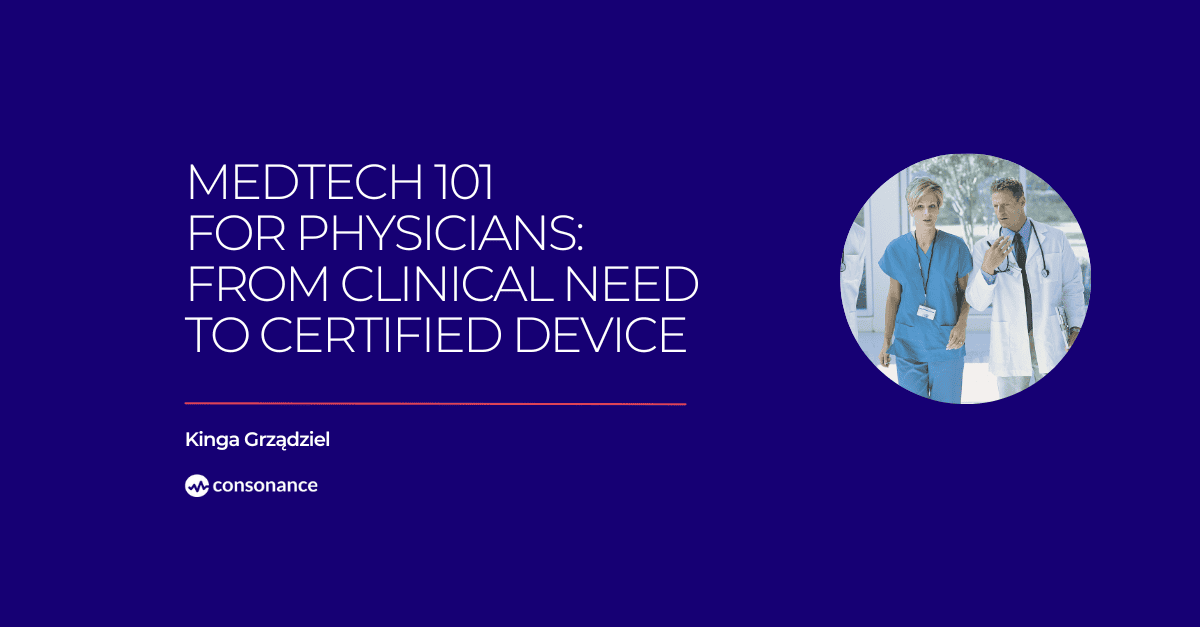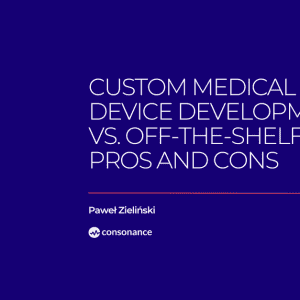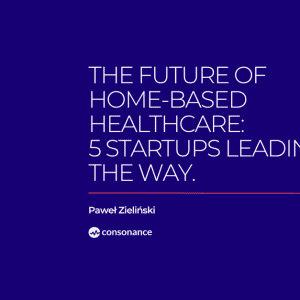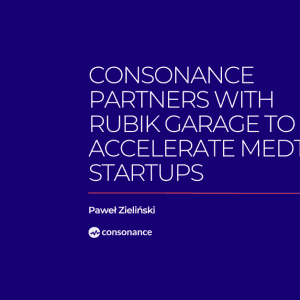MedTech 101 for Physicians: From Clinical Need to Medical Device

Every day spent at a patient’s bedside brings new experiences. Thousands of hours of work, observation, and conversations… You’ve probably wondered more than once if there should be a market solution for some of your patients’ ailments – but in reality, there isn’t one.
Have you ever thought about what you could do in such a situation? As a physician dedicated to your patients’ well-being, what if you could help an even larger group? What if you could create a medical device that changes the lives of thousands? But how do you turn this idea into reality? With the right approach and a strong team, you can successfully bring a certified medical device to market and make a meaningful difference in patients’ lives.
Let’s explore everything you need to know to navigate the medical device development journey and launch a certified medical device with confidence.
It All Starts With Clinical Need
Where does the process of creating an innovative medical device actually begin? It all starts with a clinical need – specific, unmet health challenges faced by patients or professionals that require effective treatment or new therapeutic approaches. Clinical needs refer to particular requirements in medical care, including available diagnostic methods, therapies, and medicinal products. In the context of medical innovation, we focus especially on unmet medical needs – situations where there is no satisfactory method for diagnosis, prevention, or treatment. The goal is to develop an innovative medical device that addresses these unmet needs or revolutionizes current solutions, providing patients with measurable benefits beyond existing methods.
As a physician, you witness the daily challenges your patients face. To fully grasp the scope of the problem, it is important to conduct a thorough market analysis, considering: available alternative solutions, the severity of the disease, and the size of the patient population. This approach will help you realistically assess your product’s chances of success in the market.
However, understanding the problem is only the beginning. Throughout the development and market launch of an innovative medical device, you will also need the support of investors and access to funding. The costs of development, clinical trials, and certification can be high, so securing adequate funding is crucial for the success of the project.
Funding First – Without It, Projects Stay Grounded
Passion and a desire to improve patients’ lives are an excellent starting point, but motivation alone is not enough. Developing a medical device requires significant financial investment, often well before the product reaches its first patient. Your budget should account for, among other things: salaries for employees and experts, costs of prototypes and materials, fees for audits and certification, and expenses related to production and logistics. This is why you need a solid business plan and a clear strategy for raising capital.
Where can you find the funding?
- Private investors – Attend MedTech conferences (like HLTH, LSI Emerging MedTech Summit, MedTech Forum, MedTech World, Vitalis, Digital Health World Congress) or medical trade fairs (such as Medica in Düsseldorf), where investors are actively seeking innovative projects or startup events and startup challenges.
- Grants and subsidies – Explore funding programs offered by governments, the EU (EIC programs and EIT Health) and industry organizations.
- Local and multinational accelerator programs and incubators like VentureLab, Creative Destruction Lab (CDL), EIC Accelerator, Health Founders, HighTech XL, Tech4Eva.
And there’s one more thing. Probably you don’t know how much you need exactly to reach a certain level of product maturity. In this case you should get in touch with a professional medical device development company which will deliver a technical feasibility study which would include detailed analysis of your idea, reference products, technical solution and if possible a regulatory strategy. Without this – you can get lost in the process and what’s even worse – loose capital you raised in the first place.
Physician – Engineer Collaboration in Medical Device Development
Developing a medical device is a team sport – it’s where clinical insight meets engineering expertise. As a physician, your job is to define the problem, prioritize essential features, and ensure usability. Engineers translate those needs into functional, safe, and manufacturable devices. Clear communication, realistic expectations, and openness to solutions make all the difference. Small startups face particular challenges: prototyping, testing, validation, and regulatory compliance can quickly overwhelm a clinical team. Partnering with an experienced technology partner streamlines the process, shortens timelines, and increases the chances of success.
Your innovation journey may look like this:
- Define needs and requirements – Clarify clinical problems, user needs, and critical features, engineers assess feasibility.
- Concept development – Sketch architecture, PCB design, software, enclosures, and materials.
- Proof of concept – Build early models, test in simulated environments, iterate with rapid prototyping and additive manufacturing.
- Prototype development – Create fully functional prototypes, validate usability and clinical fit.
- Regulatory strategy – Develop design controls, risk management plans, and documentation for compliance.
- Pre-clinical and clinical validation – Test safety, performance, and clinical relevance jointly.
- Manufacturing and scale-up – Support sourcing, assembly, and manufacturability to prepare for market launch.
Medical devices are complex, combining electronics, software, mechanics, and biocompatible materials. Without a skilled engineering team, projects risk delays, errors, or regulatory setbacks.

Medical device development should always start from finding a real need!
From Concept To Certification
Bringing a medical device to market is more than just engineering – it’s about navigating the certification process from day one. Different regions have their own rules, in the US, it’s the FDA’s 510(k) process, while in the EU, it’s the Medical Device Regulation (MDR). Alongside these, harmonized standards like ISO 13485 (quality management) and ISO 14971 (risk management) act as practical roadmaps for designing products that are safe for both patients and healthcare professionals.
The journey starts by confirming whether your product meets the MDR definition of a medical device, then determining its classification, a key step in choosing the right conformity assessment procedure and knowing exactly what documentation you’ll need. From there, it’s about reviewing all applicable regulations, implementing a quality management system in line with ISO 13485, and conducting either a clinical evaluation or performance evaluation depending on your device type. Once those pieces are in place, you’ll prepare complete technical documentation, carry out accredited lab testing, and finish with the Declaration of Conformity – the green light to launch your product on the market.
Your Clinical Experience Is Your Greatest Asset in MedTech
Many years of medical practice offer far more than clinical expertise, they are an invaluable asset in developing a medical device. This becomes especially clear during the clinical trial stage, when an experienced professional can quickly determine whether a device works as intended and truly addresses patients’ needs. Your years in the field also mean you’ve built a valuable network of contacts. Some of these connections may become your key opinion leaders, first customers, or business partners.
And don’t underestimate the power of public speaking. As a physician, you have access to medical conferences, congresses, and symposiums, ideal venues to present your solution directly to your target audience. What better way to promote your product than by showcasing it where experts, decision-makers, and potential users meet face-to-face?
Final Thoughts
Got a medical device idea? If so, you’re just one step away from changing the lives of many patients. Or maybe you’re still figuring things out and feeling a bit lost? No matter where you are in the process, we’re here to help. At Consonance, we support physicians, startups, and MedTech companies in turning ideas into certified, market-ready medical devices. Your idea + our expertise = innovative solutions that truly impact healthcare through medical device development.
Ready to take the next step? Contact us today and let’s bring your vision to life!






